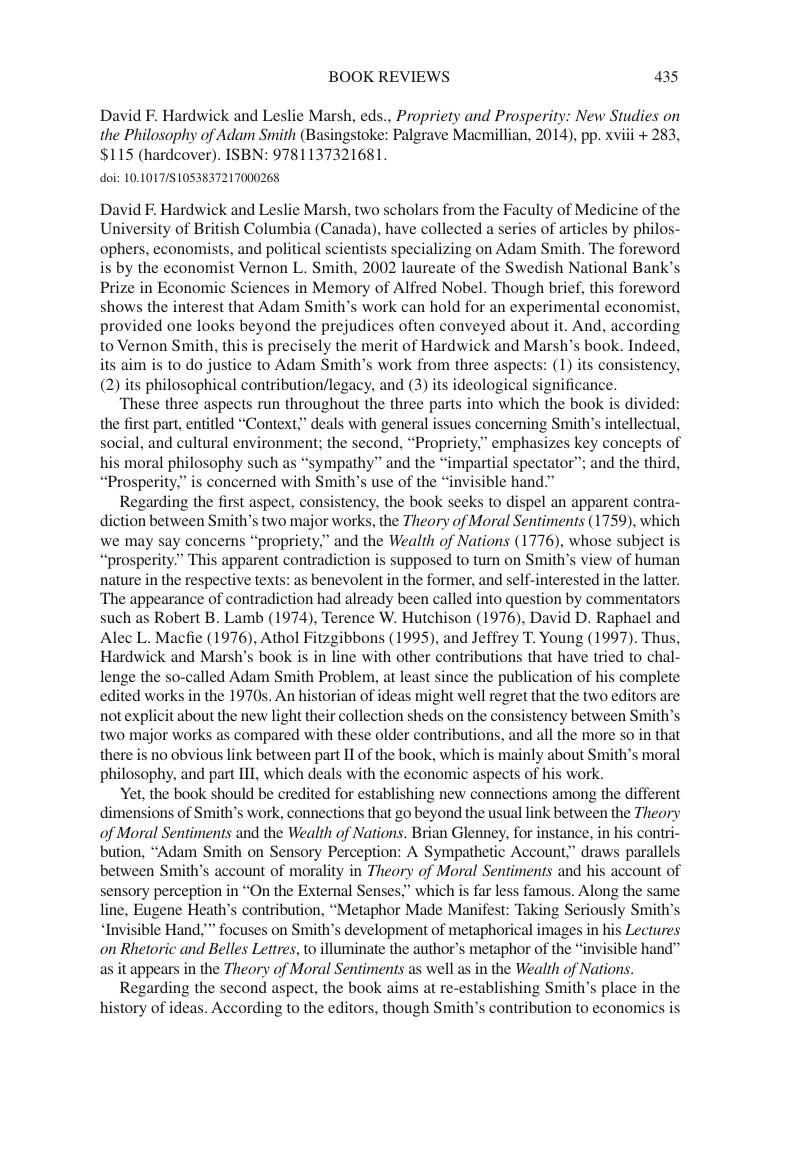Nanay, Bence.
2010.
“Adam Smith’s Concept of Sympathy and Its Contemporary Interpretations.” In “The Philosophy of Adam Smith: Essays Commemorating the 250th Anniversary of
The Theory of Moral Sentiments.”
The Adam Smith Review 5:
85–
105.
Google Scholar 